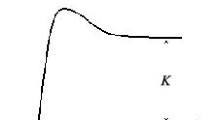Abstract
The solution of the problem of the structural synthesis of quasi-optimal control laws based on the reduction of the Lagrange problem to the isoperimetric problem is considered. The analysis of the variation of the extended action integral is based on the study of asynchronous (full) variation and leads to a boundary-value problem, the solution of which satisfies the condition for the maximum function of the generalized power and the requirement to fulfill the energy balance on the extreme trajectory. Based on the example of the problem of A.T. Fuller, it is shown that the set of quasi-optimal controls constructed using the developed method contains the optimal solutions.
Similar content being viewed by others
REFERENCES
L. I. Rozonoer, “The maximum principle of L. S. Pontryagin in the theory of optimal systems II,” Avtom. Telemekh. 20, 1441–1458 (1959).
A. A. Krasovskii, Automatic Control Theory Handbook (Nauka, Moscow, 1987) [in Russian].
L. S. Pontryagin, V. G. Boltyanskii, R. V. Gamkrelidze, and E. F. Mishchenko, Mathematical Theory of Optimal Processes (Fizmatgiz, Moscow, 1983; Wiley, New York, 1962).
E. S. Pyatnitskii, “Synthesis of hierarchical control systems for mechanical and electromechanical control systems based on the principle of decomposition,” Avtom. Telemekh., No. 1, 87–99 (1989).
E. S. Pyatnitskii, “Controllability of classes of lagrangian systems with bounded controls,” Avtom. Telemekh., No. 12, 29–37 (1996).
A. A. Kostoglotov, “A method for the identification of parameters of holonomic systems based on the technique of asynchronous variation,” J. Comput. Syst. Sci. Int. 42, 244 (2003).
D. E. Okhotsimskii and T. M. Eneev, “Some variational problems associated with the launch of an artificial Earth satellite,” Usp. Fiz. Nauk 63, 5–32 (1957).
Yu. F. Golubev, “The Okhotsimskii–Pontryagin method in control theory and analytical mechanics. Part I,” Mosc. Univ. Mech. Bull. 63, 133–138 (2008).
V. S. Novoselov, Variational Methods in Mechanics (LGU, Leningrad, 1966) [in Russian].
N. I. Akhiezer, Lectures on the Calculus of Variations (Gostekhizdat, Moscow, 1955) [in Russian].
R. I. Trukhachev and V. V. Khomenyuk, Theory of Nonclassical Variational Problems (LGU, Leningrad, 1970) [in Russian].
A. I. Lur’e, Analytical Mechanics (GIFML, Moscow, 1961) [in Russian].
A. A. Kostoglotov, A. A. Kuznetsov, and S. V. Lazarenko, “Model synthesis of dynamic process with non-stationary disturbances based on maximum of generalized power function,” Mat. Model. 28 (12), 133–142 (2016).
A. A. Kostoglotov and S. V. Lazarenko, “Synthesis of adaptive tracking systems based on the hypothesis of stationarity of the Hamiltonian on the switching hypersurface,” J. Commun. Technol. Electron. 62, 123 (2017).
A. A. Kostoglotov, “Solution of Fuller’s problem on the basis of the joint Pontryagin–Hamilton–Ostrogradskii principle,” Autom. Control Comput. Sci. 41 (4), 179–187 (2007).
R. Courant and D. Hilbert, Methods of Mathematical Physics (Wiley, New York, 1989), Vol. 1.
I. B. Furtat, “Design of a control algorithm for objects with parametric uncertainty, disturbances, and input signal saturation,” Autom. Remote Control 78, 2178 (2017).
I. M. Anan’evskii and S. A. Reshmin, “Decomposition-based continuous control of mechanical systems,” J. Comput. Syst. Sci. Int. 53, 473 (2014).
G. Korn and T. Korn, Mathematical Handbook for Scientists and Engineers (McGraw-Hill, New York, 1961).
O. E. Maikova, “Suboptimal regimes in the Fuller problem,” Tr. Mat. Inst. Steklova 236, 226 (2002).
Yu. V. Aldakimov, A. A. Melikyan, and G. V. Naumov, “Reconstruction of the regime in a one-parameter family of optimal control problems,” Prikl. Mat. Mekh. 65, 400 (2001).
Author information
Authors and Affiliations
Corresponding author
Rights and permissions
About this article
Cite this article
Kostoglotov, A.A., Lazarenko, S.V. Method of Quasi-Optimal Synthesis of Control Laws Based on the Reduction of the Lagrange Problem to the Isoperimetric Problem Using Asynchronous Variation. J. Comput. Syst. Sci. Int. 60, 843–852 (2021). https://doi.org/10.1134/S1064230721060113
Received:
Revised:
Accepted:
Published:
Issue Date:
DOI: https://doi.org/10.1134/S1064230721060113




